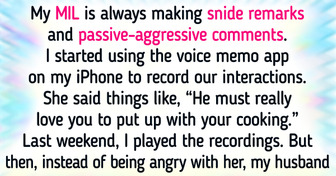I’m Not Allowed to See My Grandkids Anymore Because I Refuse to Babysit Them

So, Mars has two moons — Phobos and Deimos. And, apart from the bizarre shape, there’s nothing remarkable about them... Except for one thing. Not so long ago, scientists discovered a strange phenomenon on the surface of Phobos. And they still can’t find any explanation for it. What is this phenomenon? And what does it tell us about the history of our Solar System? Let’s find out.
American astronomer Asaph Hall discovered Phobos and Deimos back in 1877. Do you know that all the planets in our Solar System are named after Greek and Roman deities? For example, Mars, or Ares, is the famous deity of war. That’s why the satellites of this red planet were named after the sons of Ares — Phobos and Deimos.
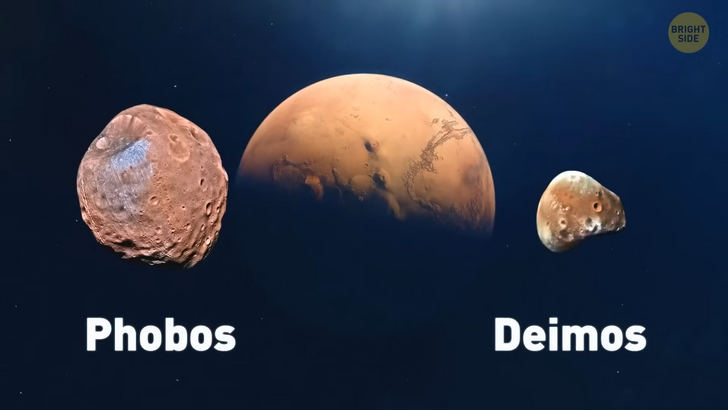
These beautiful names actually have creepy meanings: “fear” and “horror.” In 1971, NASA’s Mariner 9 telescope took their first pictures. That’s how we found out that these guys weren’t at all like our Moon. They had this weird shape, a strange and unstable orbit. Moreover, there are no other moons in the Solar System that move as close to their parent planet as these two. Well, they are its “sons,” after all.
But even though they’re very close to Mars, if you were standing on the surface of the Red Planet, you would hardly be able to see them. That’s because the curvature of Mars hides Phobos and Deimos from view. Even if you were somewhere on the equator, Phobos would look like an ordinary asteroid to you, and Deimos would look like a star. All because these satellites are basically crumbs compared to our Moon.
They’re the smallest and least bright moons in the entire Solar System. Which is ironic, considering their mighty names. Anyway, it seems that everything should be pretty clear with these two satellites. But nope. There’s a problem. You see, scientists reconstruct the history of space based on the traces found on different space objects. Dents, scratches, cracks — all these things can tell us what happened billions of years ago!
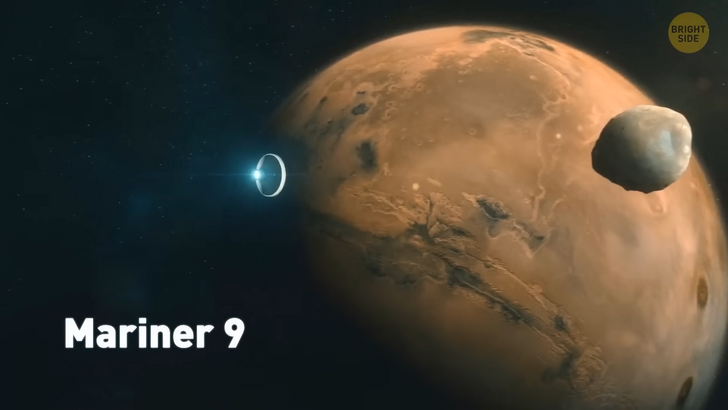
For a long time, scientists were sure that, just like their Greek prototypes, Phobos and Deimos were “twins.” But then, NASA’s Viking orbiter took new photos of the satellites. And that’s when they discovered a significant difference between the two. The entire surface of Phobos was covered with huge grooves. Those were a series of long, deep pits stretching from one end of Phobos to the other. You may say, “What’s the big deal? All space objects have this kind of stuff on them.”
And yeah, there are other satellites with similar grooves and scratches. But none of them has as many as Phobos. It’s completely covered in grooves, and they’re HUGE — up to 12 miles long and 660 feet wide! And that’s not all. Some of these grooves intersect with others. This means that Phobos has experienced not one but many traumatic events. But what exactly happened to it? Actually, scientists are still not completely sure. However, they have a few ideas. And these theories can tell us not only about the past of Phobos but also predict its future.
Theory 1: Asteroid impact. Well, the first suspect is quite obvious. There’s a large almost 6-mile-wide crater on Phobos. It’s called Angeline Stickney. It was named after the wife of Asaph Hall — the scientist who discovered the satellites. Adorable. So that’s what the first theory sounds like. Once upon a time, an astronomical body crashed into Phobos. The impact was so strong that it left a large crater.
And the effect of the collision left a bunch of grooves everywhere on Phobos. It sounds logical at first. However, scientists have noticed a flaw in this theory. They’ve learned that these grooves actually formed not INSIDE the crater but NEXT to it. So it wasn’t a collision that created them. Besides, what about those grooves that intersect with others? Or is it just a big cosmic coincidence? Well, the search for truth continued.
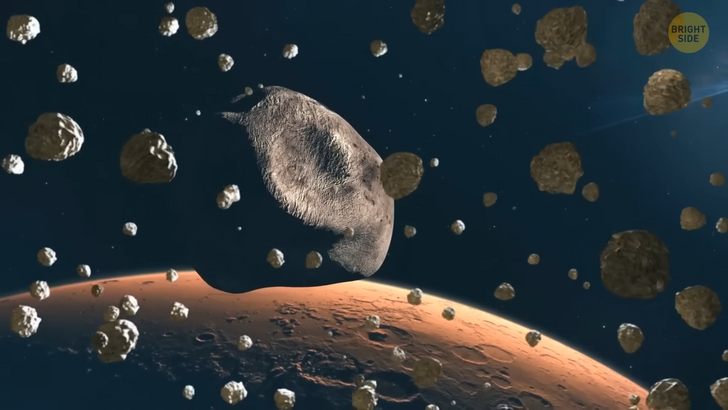
Theory 2: It’s all because of space debris. Yes, there’s a difference between these two theories. In this case, the grooves aren’t a direct consequence of the collision. Rather, it goes something like this... Something crashed into Phobos. This impact caused a bunch of rocks to be thrown into space.
Some of them were lost in the Universe forever, but others were small enough to be pulled back to Phobos. Passing next to the moon at a steep angle, they could crash into it, jump away, and so on. And since the gravity of Phobos is very weak, perhaps they couldn’t “stick” to it. In other words, these rocks were continuously pulled toward and pushed off of the satellite for many, many years.
This theory explains the intersecting grooves. It’s because the rocks were constantly falling into those places. It sounds quite logical, but there’s another problem. We don’t see any boulders on Mars or on the surface of its moons. But all this debris was supposed to “get trapped” by gravity and remain somewhere in the planet’s orbit. This, or simply become a part of Phobos.
In other words, if this were true, we’d find evidence of this theory under layers of dust. But that didn’t happen. So this explanation didn’t satisfy astronomers either. Therefore, they continued to look for the culprit. Maybe the grooves have nothing to do with Stickney Crater at all? Maybe the real culprit is something else? Something even more powerful? Could it be... Mars itself?
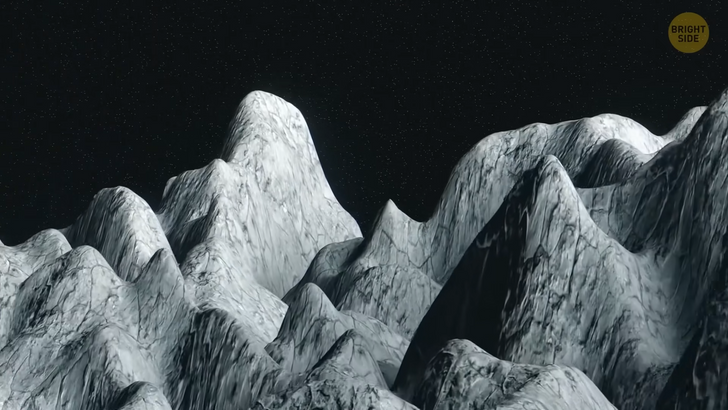
Theory 3: Mars is a twist villain. The previous theories imply that Phobos and Deimos were originally pieces of Mars. Like, once upon a time, they broke away from it and became satellites — just like our Moon. But what if that wasn’t the case?
Observations made by NASA’s Mars Global Surveyor show that Phobos and Deimos are made up of elements which are mainly found in meteorites and asteroids. So what if Phobos and Deimos are asteroids? There’s an asteroid belt between Mars and Jupiter.
Given the size, shape, and composition of Phobos and Deimos, scientists have suggested that once upon a time, they belonged to this belt. However, one day they “flew out” of it. And then gravity pulled them to Mars. This phenomenon is called “asteroid capture.”
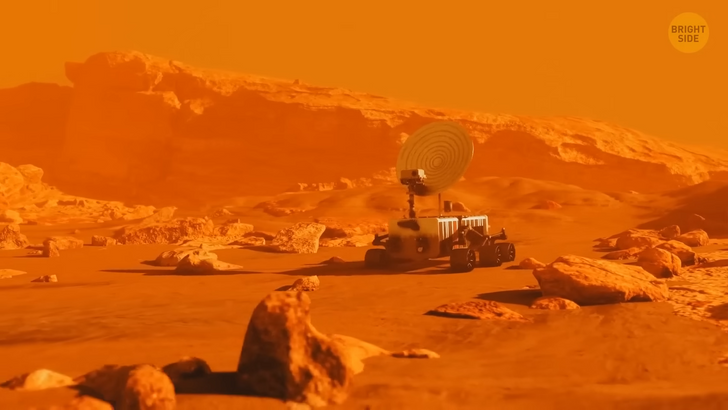
It’s very strange, though. Yeah, the “asteroid capture” isn’t uncommon, but these two have been flying next to Mars for what, billions of years? It’s weird that their orbits have remained the same. In addition, the atmosphere of Mars is very rarefied, and because of this, it could hardly capture any asteroids.
In theory, they should’ve separated from Mars at the first opportunity. However, this didn’t happen. It means that, somehow, they got stuck. And Mars immediately began to destroy them. Yep, an unexpected twist! In this version, Mars turns out to be a villain.
By studying the past, we’ve found some evidence of future crimes! The mysterious grooves of Phobos could be caused by tidal forces between Mars and Phobos. The Moon and Earth also exchange these, slightly distorting each other. But, since Phobos is much closer to Mars, the impact of the gravitational forces is much stronger.
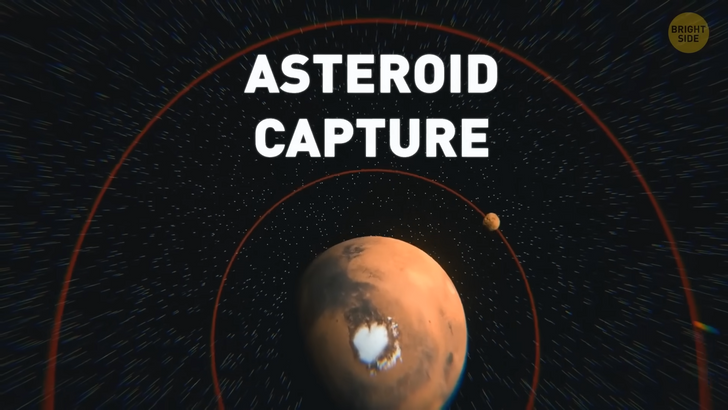
In other words, the gravity of Mars is gradually destroying Phobos. Every 100 years, the satellite gets 0.7 inches closer to Mars. It also shrinks as much as 6.5 feet, becoming even more fragile and weaker. The smaller it gets, the more the tidal forces impact it, creating strange grooves and scratches on Phobos. Yep.
Somewhere in 30-50 million years, Phobos will either collide with Mars or disintegrate and turn into a bunch of small rocks. And then Mars will also have rings, like Saturn and Neptune. That’s why Phobos is also called the “doomed Martian moon.” Anyway, these are all only theories. But the dramatic backstory of Phobos gives us an idea of how dynamic extraterrestrial objects can be.
The more we learn about them, the more we discover about the secrets of the origin of not only Mars but also other objects in our Solar System. If one day we really colonize Mars, studying its moons can help us a lot. Let’s hope that the upcoming MMX [Mars Moon Exploration] mission will reveal some of the most exciting secrets Mars’ moons are hiding.









